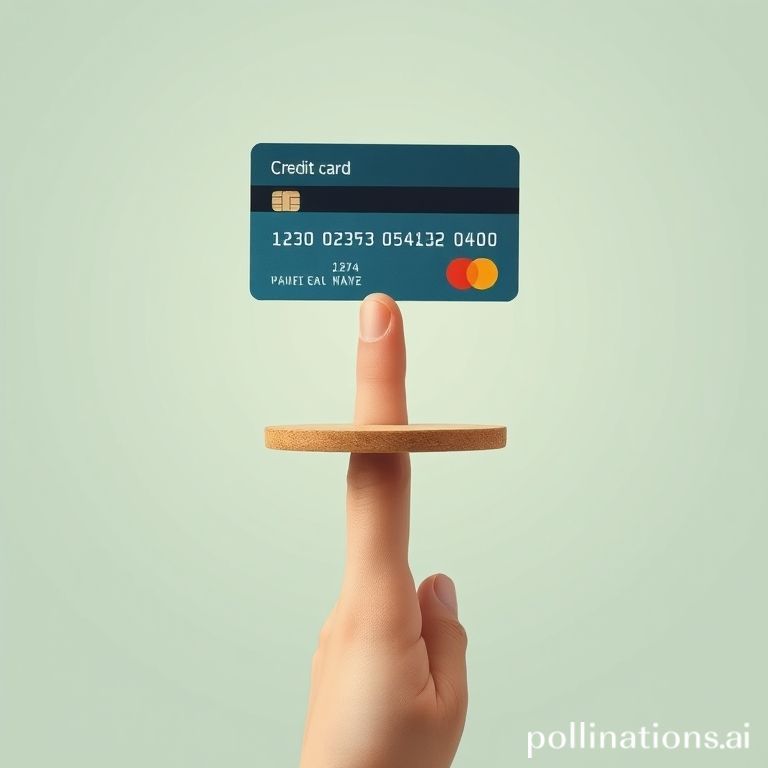Mastering Credit Card Tricks: Best for Salaried Under ₹6 Lakh/Year
Smart strategies to maximize rewards, build credit, and manage your finances effectively.
Estimated Reading Time: 18 minutes

Are you a salaried employee in India earning under ₹6 Lakh per year? If so, you’re likely navigating the world of personal finance with a keen eye on optimizing every rupee. Credit cards, often seen as a double-edged sword, can actually be one of your most powerful financial tools if used wisely. This isn't about reckless spending; it's about smart utilization, maximizing benefits, and building a robust financial future. Many believe credit cards are only for the high-income group, but that's a myth we're here to bust today. Even with a moderate income, you can master **credit card tricks** to get more out of your money, improve your credit score, and enjoy perks that feel like a bonus.
In today’s dynamic financial landscape, simply earning a salary isn't enough; you need to make your money work harder for you. Credit cards, when handled strategically, offer a gateway to financial efficiency, from cashback and reward points to interest-free periods and enhanced purchasing power. Let’s dive deep into actionable strategies tailored specifically for you, the smart salaried individual.
- The Credit Card Conundrum: Friend or Foe?
- Choosing the Right Credit Card for Your Income Bracket
- Mastering Rewards & Cashback: Your Salary's Best Friend
- Boosting Your Credit Score with Smart Card Usage
- Integrating Credit Cards into Your Budgeting Strategy
- Common Pitfalls to Avoid: Don't Fall Into the Debt Trap
- Real-Life Impact: Case Studies of Smart Credit Card Usage
- Future-Proofing Your Finances: Long-Term Credit Card Strategies
- Frequently Asked Questions (FAQ)
- Conclusion: Empower Your Finances with Credit Card Smarts
The Credit Card Conundrum: Friend or Foe?
For many, the mention of credit cards conjures images of debt and financial struggle. However, this perspective often stems from a lack of understanding and improper usage. In reality, a credit card is simply a tool. Like any tool, its utility depends entirely on how it's wielded. For salaried individuals earning under ₹6 Lakh annually, a credit card can be a powerful ally in building a strong financial foundation, provided you approach it with discipline and knowledge.
Think of it this way: a credit card offers you short-term, interest-free loans (typically 45-50 days) on your purchases. If you pay back the full amount within this period, you effectively get to use the bank's money without any cost, while simultaneously earning rewards and building a credit history. This credit history is crucial for future financial endeavors like home loans, car loans, or even personal loans, as it signals your trustworthiness to lenders.

Why a Credit Card Matters for Your Income Group
- Emergency Fund Backup: While you should have an emergency fund, a credit card can act as a secondary safety net for unexpected expenses without immediately dipping into your savings.
- Building Credit History: This is perhaps the most significant benefit. A good credit score (CIBIL score in India) is your financial passport, opening doors to better loan terms in the future.
- Rewards and Cashback: Convert your everyday spending into tangible benefits like discounts, freebies, or even cash back.
- Convenience & Security: Easier than carrying cash and offers fraud protection, which cash doesn't.
- Tracking Expenses: Credit card statements provide a detailed record of your spending, aiding in budgeting.
Choosing the Right Credit Card for Your Income Bracket
Not all credit cards are created equal, especially when your annual income is under ₹6 Lakh. Your goal should be to find a card that aligns with your spending habits and offers benefits that genuinely add value, rather than just flashy perks you won't use. Look for cards with low or zero annual fees (often waived upon meeting a certain spending threshold) and a clear reward structure.

Key Factors to Consider for Card Selection:
- Annual Fee: Many entry-level cards have no annual fee or a fee that's easily waived if you spend a modest amount each year.
- Reward Structure: Do you spend more on groceries, online shopping, fuel, or dining? Choose a card that offers accelerated rewards in your highest spending categories.
- Interest Rate (APR): While the goal is to always pay in full, know the APR. It’s crucial in case of an unforeseen situation where you can’t clear your bill.
- Credit Limit: For your income bracket, expect a modest credit limit initially. This is perfectly fine; responsible use will lead to increases over time.
- Welcome Offers: Many cards offer bonus points or cashback upon activation or spending a certain amount within the first few months.
Based on typical spending patterns and eligibility criteria for those earning up to ₹50,000 per month, here are some popular credit card options in India:
| Card Name | Key Benefits (Examples) | Ideal For | Typical Annual Fee |
|---|---|---|---|
| Amazon Pay ICICI Bank Credit Card | 5% back on Amazon for Prime, 3% for non-Prime; 2% on Amazon Pay partner merchants; 1% elsewhere. | Frequent Amazon shoppers, online spenders. | ₹0 (Lifetime Free) |
| Flipkart Axis Bank Credit Card | 5% cashback on Flipkart, Myntra, Swiggy, PVR; 4% on preferred merchants; 1.5% elsewhere. | Flipkart/Myntra loyalists, food delivery, entertainment. | ₹500 (Waived on ₹2 Lakh spend) |
| SBI SimplySAVE Credit Card | 10X rewards on dining, movies, department stores, groceries; 1 reward point per ₹100 elsewhere. | Everyday spending, groceries, entertainment. | ₹499 (Waived on ₹1 Lakh spend) |
| HDFC MoneyBack+ Credit Card | 10X CashPoints on Amazon, Flipkart, Swiggy, Zomato; 2X CashPoints on all other online spends. | Online shopping, food delivery. | ₹500 (Waived on ₹50,000 spend) |
| Ola Money SBI Credit Card | 7% cashback on Ola rides, 1% on all other spends. | Frequent Ola users. | ₹499 (Waived on ₹1 Lakh spend) |
Note: Specific benefits and fees can change. Always check the bank's official website for the latest terms and conditions.
Mastering Rewards & Cashback: Your Salary's Best Friend
This is where the real fun begins! Credit card rewards and cashback programs are designed to incentivize spending, but with smart planning, you can turn them into tangible savings or benefits. It’s essentially getting a small percentage back on money you would have spent anyway. The trick is to understand your card’s reward structure and align it with your natural spending habits.

Strategies to Maximize Your Rewards:
- Identify Your High-Spending Categories: Do you spend a lot on groceries, online shopping, or fuel? Pick a card that offers bonus rewards for these specific categories.
- Leverage Welcome Bonuses: Many cards offer significant bonus points or cashback if you meet a certain spending threshold within the first 60-90 days. Plan a large purchase (like electronics or a down payment) around this period if possible.
- Pay Bills with Your Card: Many utility bills (electricity, water, internet) can be paid via credit card. This is an easy way to accumulate points on essential expenses.
- Track and Redeem: Don't let your points expire! Regularly check your rewards balance and redeem them for benefits that you actually need or want, such as gift vouchers, statement credit, or travel bookings.
- Combine Offers: Look for opportunities to stack credit card offers with merchant discounts. For example, using your Flipkart Axis card on a Flipkart sale with additional bank discounts.
- Don't Overlook Partner Merchants: Many cards have partnerships with specific brands or platforms. Being aware of these can unlock extra discounts or rewards.
Remember, the goal is not to spend more to earn more rewards. It's about channeling your existing, planned spending through the right credit card to maximize the benefits. This disciplined approach turns a simple payment tool into a passive savings generator.
code CodeBoosting Your Credit Score with Smart Card Usage
Your CIBIL score is your financial report card, and a credit card is one of the fastest and most effective tools to build a positive history. For a salaried individual under ₹6 Lakh, a high credit score is a golden ticket to better financial products in the future, such as a home loan with a lower interest rate. Consistent, responsible credit card usage sends a powerful signal to lenders that you are a reliable borrower.

The Golden Rules for a High Credit Score:
- Always Pay on Time: This is the most critical factor. Even a single late payment can negatively impact your score. Set up auto-pay for the minimum amount due to avoid missing a payment, but always aim to pay the full balance manually.
- Keep Credit Utilization Low: Your credit utilization ratio (CUR) is the amount of credit you're using divided by your total available credit. Experts recommend keeping this below 30%. For example, if your credit limit is ₹50,000, try to keep your outstanding balance below ₹15,000 at any given time.
- Don't Max Out Your Card: Consistently using your entire credit limit signals financial distress to lenders and can lower your score.
- Build a Long Credit History: The longer you responsibly manage a credit account, the better it looks on your report. Avoid closing old credit cards, even if you don't use them frequently.
- Review Your Credit Report: Check your CIBIL report periodically (you can get one free report per year) to check for errors and monitor your progress.
Integrating Credit Cards into Your Budgeting Strategy
A common misconception is that credit cards lead to overspending. While this can happen without discipline, a credit card can actually be a fantastic budgeting tool. By channeling all your planned monthly expenses through a single card, you get a consolidated statement at the end of the month that neatly categorizes your spending. This provides a clear picture of where your money is going, making it easier to identify areas where you can cut back.
Step-by-Step Guide to Credit Card Budgeting:
- Create a Monthly Budget: Before the month begins, list all your expected expenses (rent, utilities, groceries, transport, etc.). This is your spending limit.
- Use Your Card for Planned Expenses: Use your credit card for all the expenses you've budgeted for. This helps you earn rewards on spending you were going to do anyway.
- Track Spending in Real-Time: Most banking apps send instant notifications for every transaction. Keep an eye on these to ensure you're staying within your budget.
- Set Aside the "Spent" Money: As you spend on your credit card, mentally (or physically in a separate bank account) earmark that cash for your credit card bill. This ensures you have the funds ready when the bill arrives.
- Pay in Full, Always: At the end of the billing cycle, use the money you've set aside to pay the entire outstanding balance. This way, you avoid all interest charges and reap all the benefits.
Common Pitfalls to Avoid: Don't Fall Into the Debt Trap
Understanding the risks is just as important as knowing the benefits. For a salaried individual with a limited income, falling into a credit card debt cycle can be financially devastating. Here are the key traps to be aware of and avoid at all costs.
- The Minimum Payment Trap: Banks only require you to pay a small "minimum amount due." This is a trap. Paying only the minimum means the rest of your balance accrues high interest (often 30-45% annually), leading to a rapidly growing debt.
- Cash Advances: Never use your credit card to withdraw cash from an ATM. Cash advances come with extremely high fees and start accruing interest from day one, with no grace period.
- Late Payment Fees: Besides damaging your credit score, late payments incur hefty penalties that add to your financial burden.
- Impulsive Spending: A credit card can create the illusion of having more money than you do. Stick to your budget and avoid making unplanned purchases just because you have available credit.
Real-Life Impact: Case Studies of Smart Credit Card Usage
Theory is great, but seeing how these strategies work in the real world can be incredibly motivating. Let's look at two hypothetical scenarios based on common experiences of salaried individuals in India.
Case Study 1: Anjali, the Savvy Online Shopper
Anjali, a 26-year-old graphic designer earning ₹45,000 per month, is a frequent online shopper, buying everything from groceries on BigBasket to clothes on Myntra. She opted for the Flipkart Axis Bank Credit Card.
- Strategy: Anjali channeled all her online shopping, food delivery (Swiggy), and utility bill payments through her card. She also waited for festive sales on Flipkart where her card offered an additional 10% instant discount.
- Outcome: In a year, she spent approximately ₹1,50,000 on categories that gave her 5% cashback. This translated to ₹7,500 in direct cashback. Additionally, she saved around ₹5,000 from exclusive card discounts during sales. By paying her bill in full every month, she built her CIBIL score from 720 to 780 in just 18 months.
- Takeaway: Aligning your card with your primary spending habit can lead to significant savings and a strong credit profile.
Source: Inspired by user experiences shared on finance forums like Team-BHP and Reddit's r/IndiaInvestments.
Case Study 2: Rohan, the Aspiring Homeowner
Rohan, a 29-year-old IT support specialist with a salary of ₹50,000 per month, had a goal of applying for a home loan in three years. His primary challenge was having a limited credit history.
- Strategy: Rohan applied for an SBI SimplySAVE card, which was easy to get for new-to-credit customers. He used it for all his routine expenses like fuel, groceries, and dining, ensuring his credit utilization never crossed 25% of his ₹60,000 limit. He set up auto-pay for the full amount to never miss a due date.
- Outcome: After three years of disciplined use, Rohan's credit score improved from non-existent to a strong 790. When he applied for a home loan, he was not only approved easily but was also offered a preferential interest rate that was 0.25% lower than the standard rate. This small percentage difference would save him lakhs over the tenure of his loan.
- Takeaway: A credit card is a powerful tool for building a credit history from scratch, which pays huge dividends when seeking larger loans.
Source: Based on common financial advisory success stories and scenarios discussed by financial planners in India.
Future-Proofing Your Finances: Long-Term Credit Card Strategies
Once you've mastered the basics, you can start thinking long-term. Your financial journey will evolve, and so should your credit card strategy. As your income grows, you can unlock more premium cards with better benefits.
- Request Credit Limit Increases: Every 6-12 months of responsible usage, you can request a credit limit increase. A higher limit reduces your credit utilization ratio, which can further boost your score.
- Card Upgrades: As your salary crosses certain thresholds, you may become eligible for more premium cards that offer benefits like airport lounge access, better reward rates, and comprehensive insurance covers.
- Building a Credit Mix: In the long run, having a healthy mix of credit (like a credit card and a small personal or vehicle loan) can positively impact your score, showing you can manage different types of debt responsibly.
Frequently Asked Questions (FAQ)
For a ₹50,000 monthly salary, cards like Amazon Pay ICICI Bank Credit Card, Flipkart Axis Bank Credit Card, or SBI SimplySAVE are excellent choices. They offer great cashback and rewards on common expenses like online shopping and groceries, aligning well with typical spending patterns at this income level. Always compare interest rates and annual fees.
To avoid debt, always pay your full outstanding balance by the due date. Treat your credit card like a debit card – only spend what you can immediately afford. Set a strict budget, use the card for planned expenses to earn rewards, and avoid cash advances. If you can't pay in full, prioritize paying more than the minimum to reduce interest charges.
Yes, 'secured credit cards' or entry-level cards often serve this purpose. Cards like the SBI SimplySAVE, ICICI Amazon Pay, or even some co-branded cards are easier to get for new-to-credit individuals. A secured card requires a fixed deposit as collateral but helps build a strong credit history quickly with responsible use.
Key fees include annual fees (sometimes waived), interest charges (if you don't pay in full), late payment fees, cash advance fees, and foreign transaction fees. Understanding these can save you a lot of money. Always read the MITC (Most Important Terms and Conditions) document carefully.
Rewards points are earned on spending and can be redeemed for various benefits like vouchers, merchandise, or air miles. Cashback directly credits money back to your account or statement. To maximize, understand your card's reward structure, use it for categories where it offers bonus points (e.g., dining, fuel), and leverage welcome bonuses and festive offers.
Conclusion: Empower Your Finances with Credit Card Smarts
For a salaried employee earning under ₹6 Lakh a year, a credit card is far from a luxury; it's a strategic tool for financial empowerment. By choosing the right card, aligning it with your spending, and adhering to the golden rule of paying your balance in full and on time, you can unlock a world of benefits. From earning cashback on everyday purchases to building a credit score that opens doors to your future dreams, the power is in your hands. Embrace these credit card tricks not as a way to spend more, but as a way to spend smarter. Your financial future will thank you for it.
Share & Subscribe
Found this guide helpful? Share it with your friends and colleagues!
Get smart money tips delivered straight to your inbox.
Comments
Post a Comment